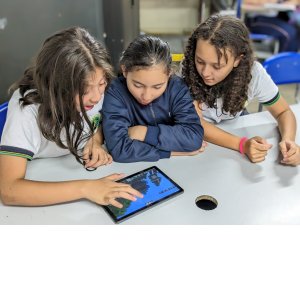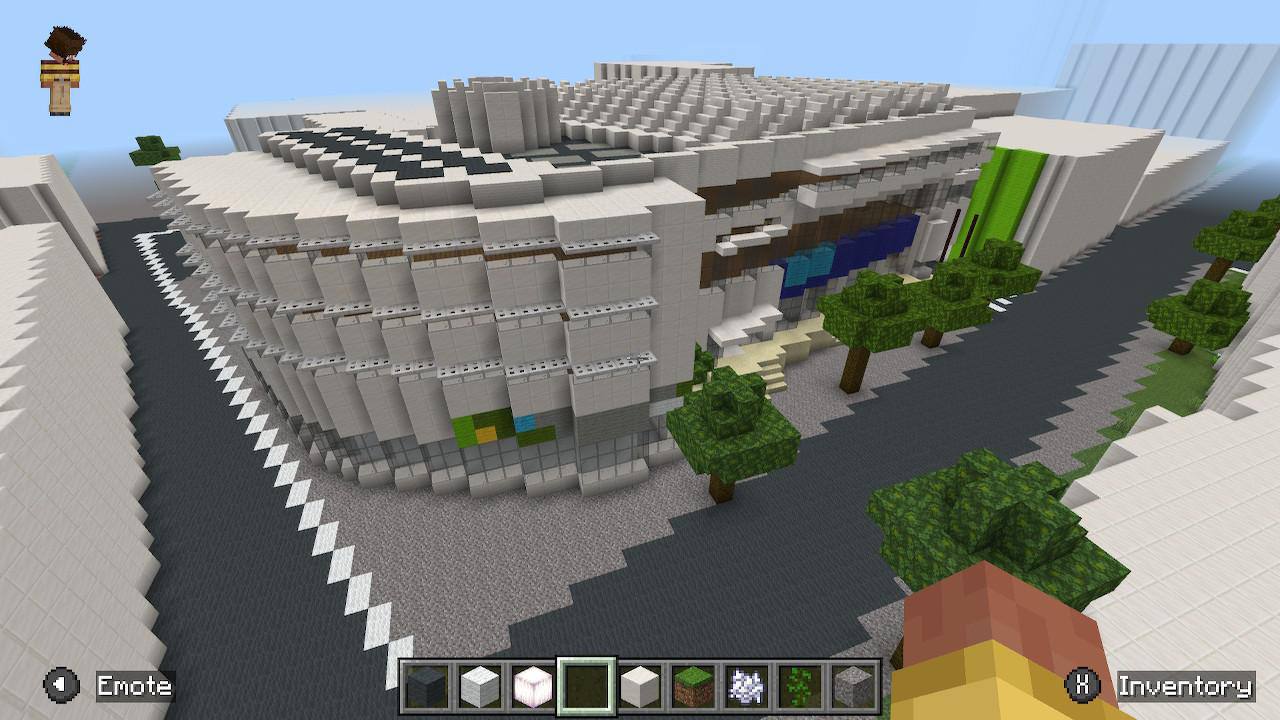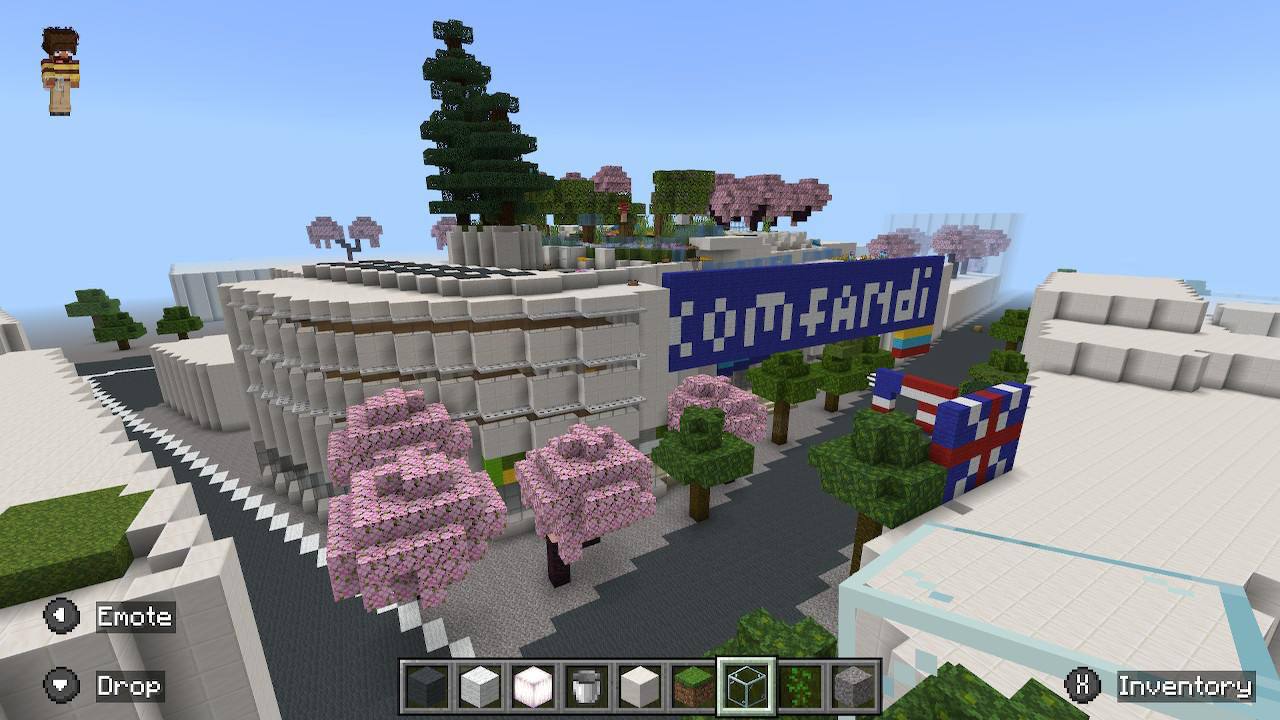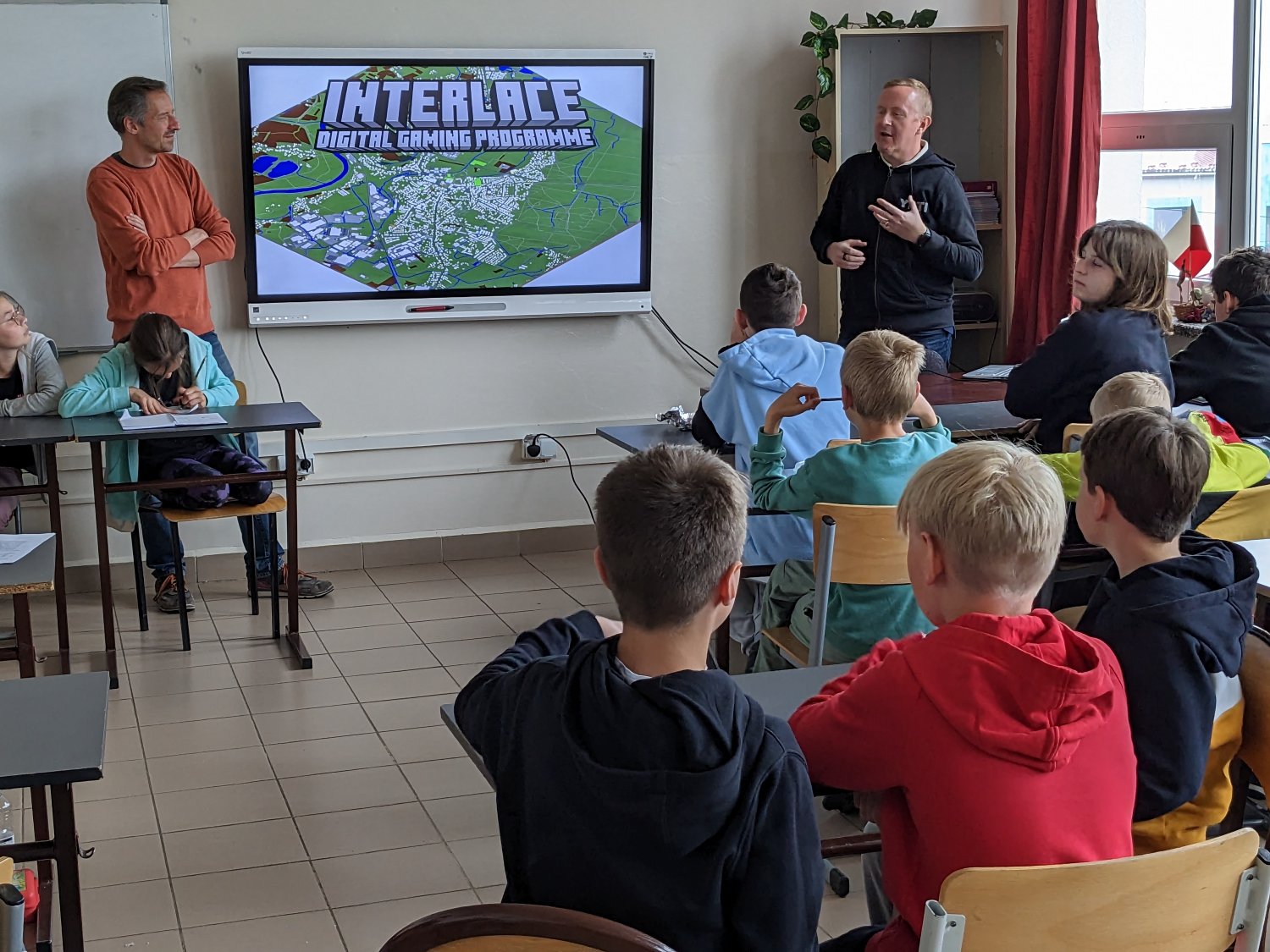
During our visit to Cali, Colombia for the UN COP16 Biodiversity Conference, we partnered with Humboldt Institute to host a workshop at Humboldt House, the COP’s “space for the people”, where children used Minecraft to reimagine their town using nature-based solutions.
The workshop began with an engaging conversation about the importance of nature in cities, allowing the children to talk about areas in their town that already have natural spaces and why they enjoy them. Then, we explored the Minecraft version of Humboldt House and its surrounding area: how could the building and streets be improved using ideas such as green roofs, urban parks or reintroducing animals and insects?

The children then got to work designing their own nature-based solutions to transform the local area into a space that benefits both the environment and their communities.
Working in teams, the children brought their ideas to life, crafting everything from rooftop gardens and green walls, to butterfly houses, fish ponds and shaded areas for relaxation. Their imaginative designs showcased creative ways to improve their city, which they presented to the other groups at the end of the workshop.

Why Minecraft?
This initiative emerged from INTERLACE, a four-year, EU-funded project to restore and rehabilitate urban nature across Europe and Latin America.
With over 170 million monthly users and over one trillion views on YouTube, Minecraft is one of the best-selling video games of all time. In the game, players use blocks, similar to LEGO, to build in a three-dimensional world.

Minecraft is already being embraced across the world as an educational tool for teaching about a variety of topics including maths, IT and culture. Through the Minecraft Education programme, led by Microsoft, virtual worlds and lesson plans have been created to teach about mangrove restoration, climate change and flood risks, sustainable building design and more.
By bringing nature-based solutions into the Minecraft world, we can meet kids where they are - they can learn in an environment that is fun, familiar and associated with imagination and creativity. They are the experts in this domain; our role is simply to channel their skills into solving problems where nature offers a solution. And they set about tackling these challenges with abundant confidence and enthusiasm.
Engaging children in environmental education with digital gaming
In preparation for the sessions, we build a replica of an area that the students will be familiar with, and that has potential for green interventions. Once this area has been selected, we use data from OpenStreetMap, a community driven geographic database, to import a map of the local area to a Minecraft world. Our creative team then gets to work embellishing the site in Minecraft using photographs and other visual references, so it’s recognisable and ready to use during the workshop.

Prior to the Minecraft workshops, the students spend some time learning about the importance of nature for both their local area and the planet. This can involve:
- Discussing the environmental challenges facing their city, such as flood risk, urban heating or access to green spaces
- Learning about what nature-based solutions are and why they are important
- Visiting the area that they’ll explore in Minecraft to understand what it currently looks like

This combination of traditional learning with use of digital technology helps the method to fit in with national curriculums, whilst offering an exciting activity that students are keen to engage with. Our experience has also indicated that it's a great approach for fostering teamwork and inclusivity, with one school commenting that it was the first time all pupils had been able to contribute equally, across all abilities.
By complementing environmental education with the excitement of digital gaming - all in the context of ‘real’ places that people are familiar with - we have been able to effectively engage students across the world not just in learning about the environment, but also in becoming active participants in its future planning and sustainability.
Are you interested in using Minecraft?
Are you interested in using Minecraft to teach about nature-based solutions? We have already successfully run Minecraft workshops in Spain, Germany, Poland, Costa Rica, Colombia and Ecuador as part of the INTERLACE project and we would love to bring the initiative to your city!
Get in touch at info@oppla.eu to find out more!
Please note: This is not an official Minecraft service. We are not associated with Microsoft or Mojang Studios.
